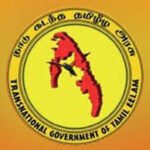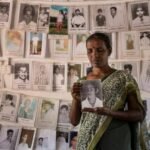Various aspects surrounding Tamil Eelam and its significance.
### 1. **Historical Background**
– **Colonial Era**: The roots of the Tamil Eelam movement can be traced back to the British colonial period when the British favoured the educational and administrative advancement of Tamils over Sinhalese, leading to ethnic divides. Post-independence, policies favouring the Sinhalese majority, such as the Sinhala Only Act of 1956, further marginalised Tamils.
– **Emergence of Tamil Nationalism**: In response to perceived injustices, Tamil nationalism began to emerge in the 1960s and 1970s, with various political parties advocating for Tamil rights. This culminated in the formation of militant groups, including the LTTE, which sought a separate state through armed struggle.
### 2. **Civil War and Its Aftermath**
– **Conflict Dynamics**: The civil war (1983-2009) was marked by severe violence, including attacks on civilians, forced disappearances, and large-scale displacements. The LTTE became known for its guerrilla tactics and suicide bombings, while the Sri Lankan government responded with military offensives.
– **War Crimes and Accountability**: Reports of war crimes committed by both sides during the conflict have raised significant concerns. The need for accountability and justice remains a critical issue for survivors and advocates, as many families continue to seek information about missing loved ones.
### 3. **Political Landscape Post-War**
– **Current Political Representation**: Following the war, various Tamil political parties have emerged, advocating for the rights of Tamils within a united Sri Lanka. The Tamil National Alliance (TNA) is one such party that aims to represent Tamil interests in the Sri Lankan Parliament.
– **Autonomy Demands**: There have been calls for greater autonomy within a federal structure, which could address Tamil grievances while maintaining national unity. Discussions about constitutional reforms and devolution of powers remain ongoing.
### 4. **Social and Economic Impact**
– **Displacement and Resettlement**: The civil war resulted in significant displacement, with many Tamils living in refugee camps or abroad. The process of resettlement and rehabilitation is crucial for rebuilding communities and restoring livelihoods.
– **Economic Development**: The northern and eastern provinces, where Tamils predominantly reside, are rich in resources and have potential for development. However, rebuilding the economy requires investment, infrastructure, and addressing the challenges posed by lingering tensions.
### 5. **Cultural Aspects**
– **Language and Heritage**: The preservation of Tamil language and culture is central to the identity of Tamils in Sri Lanka. Efforts to promote Tamil education, literature, and arts are vital for maintaining cultural heritage.
– **Cultural Festivals and Celebrations**: Events such as Pongal (a harvest festival) and Thaipusam are important for cultural expression and community bonding among Tamils. These celebrations serve as a reminder of their rich traditions and collective identity.
### 6. **International Involvement**
– **Global Advocacy**: The Tamil diaspora is instrumental in advocating for Tamil rights on international platforms, including the United Nations. They engage in lobbying efforts to raise awareness about human rights violations and promote calls for accountability.
– **Foreign Relations**: International actors, including India and Western countries, have had varying degrees of involvement in the Sri Lankan conflict and its resolution. Their stance on Tamil Eelam has influenced diplomatic relations and negotiations.
### 7. **Youth and Future Generations**
– **Role of Youth**: The younger generation of Tamils, often born after the war, is increasingly vocal about their aspirations. Many are engaged in activism, arts, and education, seeking to redefine Tamil identity and advocate for their community’s rights.
– **Bridging Divides**: Initiatives that promote dialogue and understanding between Tamil and Sinhalese youth can play a crucial role in fostering reconciliation and building a more inclusive society.
### 8. **Challenges Ahead**
– **Ongoing Tensions**: Despite the end of the civil war, tensions persist, and incidents of violence and discrimination against Tamils have been reported.
– **Political Will**: Achieving meaningful change requires political will from both the Sri Lankan government and Tamil leaders to address grievances, promote reconciliation, and work towards a peaceful coexistence.
The quest for Tamil Eelam is a deeply complex and evolving issue that intertwines history, identity, politics, and social dynamics. The future of the Tamil people in Sri Lanka hinges on addressing these multifaceted challenges while striving for a peaceful and equitable society.






